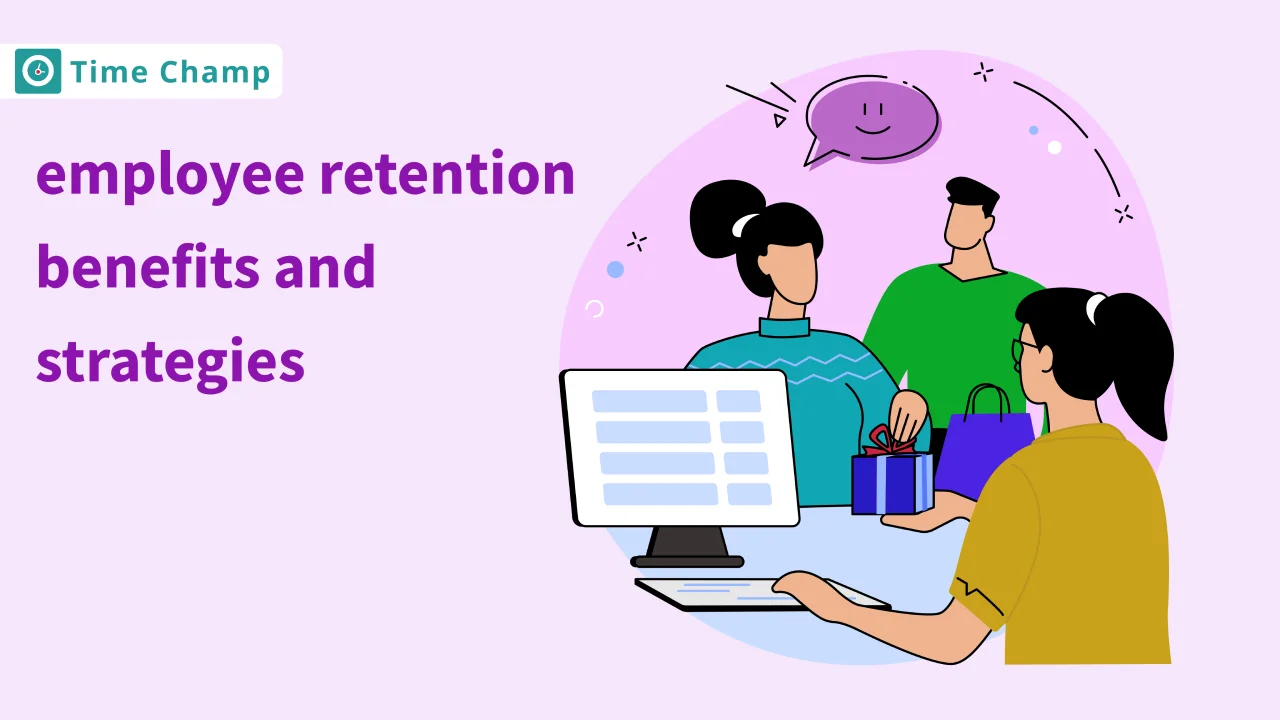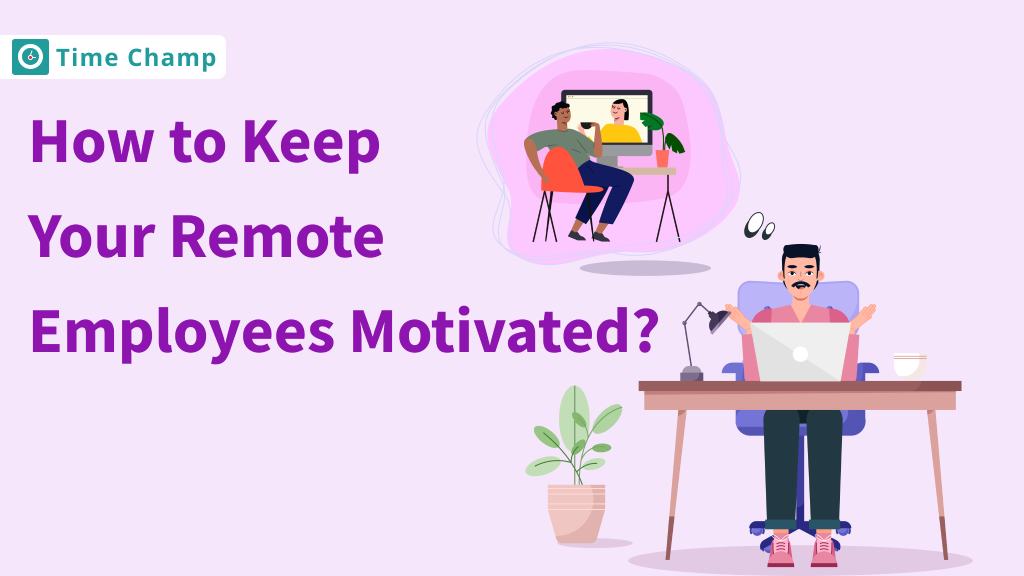Employee retention is not only about keeping your staff but it is also about ensuring that your employees remain with the company for a long time. It is rather like developing a deeply cohesive professional team where members are committed to their functions and motivated to continue their participation in the journey of the organization towards success. Retention of employees guarantees the company sustainability, productivity and a nice working environment. Of course, employee retention is about employees feeling appreciated and wanting to be part of the firm forever.
Let’s see about employee retention, its importance, benefits, and strategies to enhance it.
What is Employee Retention?
Employee retention is the process by which employees’ satisfaction and motivation are maintained so that they do not quit their jobs. It includes building a suitable workplace, providing chances for development, ensuring fair compensation and benefits, and acknowledging employees’ achievements. In essence, it aims at increasing employee engagement and their commitment to the organization so that they remain with the firm instead of looking for other options.
Employee Retention Rate Formula:

Why employee retention is so important for an organization?
This is the key to a company’s success in various ways. At first, it is a less expensive option, on which the company might save recruitment and training costs. Still, the advantages of talent retention are not only limited to cutting costs but also establishing a good atmosphere in the workplace.
On top of that, experienced long-term employees contribute detailed information and experience. With their knowledge of company procedures and culture, they not only speed up the processes but can make new ideas. On the other hand, their standing as leaders is arguably a key factor that instils a sense of stability and togetherness in teams.
In addition, a high retention rate increases the company’s status as the employer of choice. It takes little time for a positive corporate culture to become associated with the brand, which attracts the best talent while the competition remains on the lookout.
In this sense, talent retention grows beyond holding employees, it becomes building a healthy organizational ecosystem where employees feel motivated, valued, and empowered to offer the best that they have. Through their targeted retention strategies, companies are on the road to maintaining steady growth and prosperity.
Benefits of employee retention strategies:
Cost Savings:
You can save costs by keeping experienced employees and avoiding the need for recruitment or training again. This is because happy employees tend to work better, promoting a good working environment and increasing profits generated. In the long run, having your old employees around will make sure that normalcy is maintained while at the same time reducing expenses incurred when people leave.
Enhanced Productivity and Efficiency:
Keeping experts, saving the company’s money, and creating a good work culture are the things that boost the efficiency and productivity of the company. Having motivated, trained and ambitious employees leads to increased stability, productivity, and satisfaction. So, it results in good credibility and the ability to draw in the greatest talent, which all combine to make the organization sustainable and successful.
Enhanced Employee Satisfaction:
Employee engagement strategies, which include career development paths and recognition, are essential factors in making all employees feel appreciated and pleased. This serves the purpose of improving employees’ morale and job security, creating opportunities for better relationships, and ensuring that there is a balance between work and life, all these contributing to more satisfied, committed employees.
Main reasons why employees leave frequently:
Understanding these key reasons is crucial for organizations to implement effective retention strategies and make a workplace where employees feel valued and motivated to stay. Here are the main reasons why employees leave organizations or companies.
1. Inadequate Compensation:
Employees want to be paid fairly and benefits that reflect their skills and contributions.
2. Lack of opportunities for Career Growth:
A lack of opportunities for advancement or professional development can lead employees to seek opportunities elsewhere.
3. Lack of Recognition:
When employees don’t get relevant recognition for their efforts and contributions can lead to the resignation of employees.
4. Lack of Work-life balance:
Excessive workloads and inflexible schedules can strain employees. This can make them look for jobs where they can manage their time better.
Lack of positive work environment:
When employees don’t feel supported, respected, or part of a team at work, It leads to dissatisfaction and they look for other better jobs, where they get a positive work culture.
Effective employee retention strategies:
Provide growth opportunities:
Invest in employee development through training, personalized mentorship, and clear career paths. By offering avenues for continuous professional growth, you demonstrate commitment to their long-term success and encourage them to stay with the company.
Offer competitive compensation and benefits:
To keep top talent you can offer them competitive benefits and salaries. With competitive pay and benefits at par or exceeding the industry level, companies not only attract highly qualified specialists but also make those already working for them want to remain for longer periods.
Competitions in offering salaries that are relevant or higher than the average show acknowledgment for the efforts made by employees leading to financial stability and thus true loyalty and complete dedication.
Recognize and reward your employees for their work:
Recognizing and rewarding employees for their contribution is one of the best ways to keep them happy and motivated to stay with the company. When their hard work is acknowledged, it increases their spirits and makes them feel valued.
By giving out rewards like bonuses or praise, the company shows that it cares about its employees. This makes them want to stick around and continue doing their best, which helps reduce turnover and keeps the team strong.
Promote a work-life balance:
Promoting work-life balance is crucial for keeping employees happy and motivated to stay. By encouraging and promoting employees to maintain an appropriate balance of their professional duties and private lives, organizations should exhibit their commitment to their employees’ happiness and health. It is through flexibility in work hours placements or remote working opportunities, wellness programs, and achievements that an employee can manage his/her time well, hence reducing his/her stress levels.
When employees feel supported in achieving worklife balance, then they are more likely to stay with the organization for the long term. This helps to form a stable and committed team, where everyone is completely involved and motivated.
Onboarding:
Onboarding is a great strategy for effective talent retention. It is about giving new hires a warm welcome and assisting them to adjust to their new roles quickly. In this way, you make them feel better, and they become more self-assured in their work. So, they are likely to remain within the company for a longer time because they start off feeling supported. It is all about pouring into their success and making them feel valued members of the team.
Utilizing Employee Productivity Software for Enhanced Employee Retention:
Employee productivity software
improves employee
engagement by applying
productivity processes and
identifying factors that lead to
retention, like compensation and
orientation to professional growth
focus. Primarily, it centralizes
information, secures tasks, and
enhances transparency, hence
creating a friendly and productive
workplace.
Employees can be
tracked through involvement,
predictive analytics, and risk
levels taking proactive measures as
and when necessary. The recognition
programs and personal development
strategies are the instruments to
increase the employees’ trust
and loyalty. The proper utilization
of
productivity software allows
organizations to deal with
employees’ demands and cultivate a
positive organizational culture.
Ultimately, high retention rates
pave the way for a highly motivated
and committed team.
Maximize Your Employee Retention with Time Champ: Elevate Satisfaction and Loyalty through Effective Employee Management
Time Champ:
Use Time Champ and improve your employee engagement. Efficient time management, better work-life balance, and enhanced productivity lead to higher satisfaction and loyalty, reducing turnover.
Time Champ’s smart task organization and tracking tools help employees to effectively plan their workload, therefore reducing stress and increasing job satisfaction. Transparency in communication and collaboration are good for teamwork and insights into time use help employees achieve work-life balance. Altogether, Time Champ builds a culture that makes workers happy, which improves their retention.
- Effective Time Management: Time Champ assists employees in organizing tasks and prioritizing their workload, reducing stress and overwhelm.
- Improved Work-Life Balance: By managing time more efficiently, employees can achieve a better balance between work and personal life, leading to increased satisfaction and retention.
- Meeting Deadlines: Time Champ assists in meeting deadlines consistently, which enhances job performance and reduces the risk of burnout.
- Enhanced Productivity: With Time Champ, employees can focus on tasks more effectively, boosting productivity and job satisfaction.
- Reduced Turnover: By providing employees with tools to manage their time better, organizations can create a supportive work environment that reduces turnover rates.
- Employee Satisfaction: Time Champ contributes to employee satisfaction by helping them feel more in control of their workload and time, which is crucial for retention.
Ready to say goodbye to high turnover rates? Embrace Time Champ’s employee retention solutions today and build a stronger, more loyal team for tomorrow!
Employee Retention VS Employee turnover:
The below table represents the difference between Employee retention and Employee turnover.
| Attributes | Employee Retention | Employee Turnover |
|---|---|---|
|
Definition
|
Keeping
employees
within
the
organization
for a
longer
time
|
Rate at
which
employees
leave
the
organization
|
|
Focus
|
Keeping
employees
satisfied
and
engaged
|
Tracking
the
number
or
percentage
of
employees
who
leave
|
|
Objective
|
Maintain
a stable
workforce
|
Understand
reasons
for
employees
leaving
and
address
them
|
|
Impact
|
Increases
productivity,
morale,
and
company
culture
|
Can
disrupt
workflow,
incur
costs,
and
affect
morale
|
|
Strategies
|
Career
development,
competitive
compensation,
recognition
|
Exit
interviews,
addressing
underlying
issues,
improving
culture
|
Boost your company's success by enhancing employee retention
Retain Your Team: Use Time Champ to Keep Employees Happy
Signup for FreeBook Demo
Conclusion:
Employee retention is a crucial aspect of any organization’s success. Therefore positive working conditions provide the foundation to support loyal and satisfied employees. These could come in the form of opportunities for growth in one’s career path, paying highly competitive salaries, and promoting balance between work and other aspects of life. In addition, when employers utilize employee productivity software, there will be more stability, resulting in more organized employees driven towards meeting set goals.
It refers to the strategies and processes an organization develops to keep its top talent and mitigate turnover risks.
It is achieved due to various factors such as satisfaction that comes from work, compensation and benefits, career advancement opportunity, work-life balance, organizational culture as well as leadership.
It is something
that should be measured
by use of various
measurements such as
turnover rate, retention
rates, average tenure,
and also satisfaction
surveys of the employees
which give an insight
into how effective the
strategies for
maintaining those
employees are and may as
well help in pinpointing
the areas that can be
improved.
Poor employee retention can lead to negative consequences for organizations, including increased recruitment and training costs, loss of institutional knowledge, decreased morale among remaining employees, reduced productivity, and damage to the company’s reputation.
To create job satisfaction among employees, employers must promote effective communication at work. Trust is created when people know what is happening and can speak freely, leading to improved teamwork. Consequently, employees feel more as part of a unit and are less inclined to leave.







